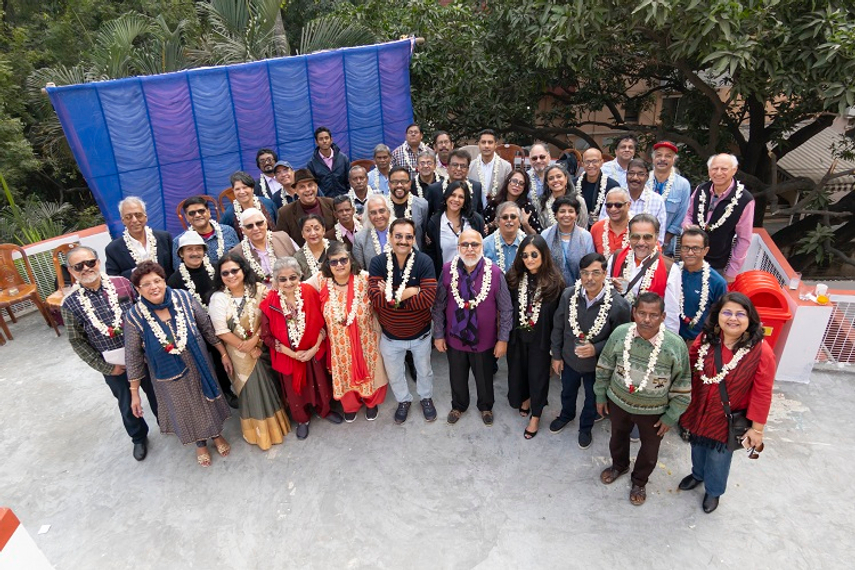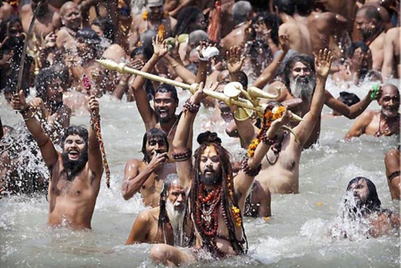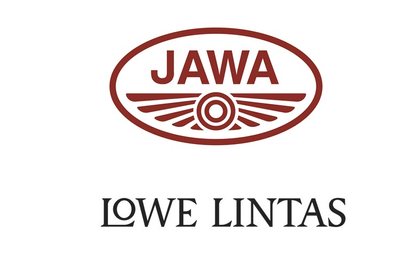Many years ago, when God was a little boy, Stanley and Yvonne Pinto rode into Calcutta from Bombay on the Howrah Mail, to establish an outpost of Lintas India in that city. It was the first Lintas office out of Bombay and set up primarily to service an existing client: GEC.
The Pintos checked into the Great Eastern Hotel, so he could walk to work; the office was a single room in the Hindustan Lever office at Ilaco House on Brabourne Road. A partition was installed, to accommodate a secretary.
That was the humble beginning of Lintas Calcutta. But anyone who knows Stanley Pinto knows there is not a lot that is humble about him. For him the opportunity was not to be lost. He had been a copywriter at Lintas Bombay, and then an assistant account executive at a clerical and dispensable level . . . which explained his selection for this posting. The sop was a promotion to Grade 4 management, and the title of Resident Account Executive, which entitled him to a rent allowance of Rs 350 per month. But this exile to Calcutta would become Stanley Pinto’s path to the top, driving past others at Lintas Bombay, senior to him, for whom a move to Calcutta would have been a demotion.
This new office was created to service the GEC Fans account that Ananda “Andy” De, a friend of Gerson da Cunha and marketing manager at GEC, had given Lintas. That GEC Fans account was not sexy, as these things went. In fact, there were few sexy accounts in Calcutta by the standards of the Bombay ad scene, and those that existed had been divided up between JWT and Clarion McCann, with OBM (now O&M) picking up the crumbs.
Stanley started to nose around for new business. He learnt soon enough that most of Calcutta’s companies were run by boxwallahs, the half-derogatory term for executives in large companies that were once British-controlled. Every upwardly mobile executive in Calcutta pretended to be a boxwallah, and to get anywhere with them, one had to become one too.
Boxwallahs had to be club men. So Stanley joined clubs. (In less than ten years, he was a member of the Saturday Club, the Calcutta Cricket & Football Club, the Tollygunge Club, and the Bengal Club.)
Boxwallahs had to have chauffeured cars. Stanley was too low-down on the Lintas totem pole to have a company car and driver. When he learned to drive on arriving in Calcutta, he had bought a second-hand Standard Herald, the least important car in India at the time. He couldn’t afford more than that. Something had to be done because the boxwallahs who ran the companies whose accounts Stanley wanted wouldn’t give the time of day to someone who self-drove a rattle trap Standard Herald. So Stanley worked around the Lintas rules, created some very Bengali gondogol and managed to rent a brand new shining black Ambassador. His bosses at Lintas Bombay knew nothing about it. What’s more it had an air-conditioner in it . . .the only one of its kind in Calcutta at that time.
With his club memberships and his shiny, air conditioned, chauffeur driven car, Stanley was all set to storm the bastions of boxwallah Calcutta.
The new business started to dribble in and the dribble turned into a minor flood.
Reckitt & Colman, a Clarion client, tried us out on Dettol, and we used our Hindustan Lever consumer products experience to transform it from a moribund bottle in the medicine chest to a mainline family product. Sales went up a thousand percent in the first year. So Reckitt gave us a new product Disprin. In a year, it had overtaken Aspro and Saridon, becoming the market leader.
These successes led to more new business: British Paints’ Luxol Silk. Union Carbide’s Eveready batteries.
That one room at Hindustan Lever’s office wasn’t good enough anymore. So we moved to an office at Everest Building on Chowringhee Road. And we increased our staff, bringing on board Atul Sharma and Pranesh Misra, both from IIM Ahmedabad.
We were the only agency with MBAs as our Account Service men. The word went around that they were capable of writing the marketing strategies for the clients, most of whose product managers had never been to a business school themselves!
Lintas was now the aggressive fleet-of-foot agency that none of the others wanted to directly compete with. Unfortunately, those were the days when it was against the Indian Advertising Council’s rules for any agency to surreptitiously poach another agency’s accounts. One had to wait to be asked. And that meant making friends with the right people at the client companies.
But how? Stanley hit upon two ideas:
First, he managed to get on the committees of his Clubs. Now he had direct access to most of the senior management of Calcutta’s companies.
Second, he stood for President of the Calcutta Advertising Club. And won. Before long, Stanley and Atul and Pranesh re-vitalised the club, starting a club journal called ad-missive, bringing in speakers from Bombay at least once a month, and even running three-month marketing and advertising courses based on the IIM Ahmedabad curriculum. The sleepy Advertising Club was now regularly in the public eye, and with it went Lintas.
The final step in our strategy was when we moved from Everest Building to Lintas House. Only the second ‘Lintas House’ in the world, the Chairman of Lintas Worldwide Tim Green told Stanley. after the headquarters in New Fetter Lane, London.
Meanwhile, somewhere along the line, we had stopped our dependence on Lintas Bombay almost completely. We had two charming secretaries, Patsy de Souza and Colleen Kingham. We had our own creative team that started with Stanley as the copywriter and Alestaire D’Souza as the art director. Later, when Ally had to return to Bombay, we brought on Rema Menon as art director. And when the business got too large not have a full-time copywriter, Pronab Ghose came on board. We even had our own Art Studio. Media planning was left to Bombay but BSH Subramanian, who had started as my secretary when we were only a two-man team, took over media buying. It was a small tight team and we worked like dogs, but we were the talk of the town.
Atul and Pranesh were now account directors, with bright young account executives, Bhaskar Rao and Subir “SG” Ghose supporting them. Later came Putli, as account assistant.
It wasn’t long after that that Stanley got hauled off to Bombay by the new MD Alyque Padamsee. "You are too important to be running this cockamamy one horse outfit," said Alyque. It was the start of the stormiest relationship in Lintas’s senior management ranks ever. It lasted two years until, in 1984, Stanley told Jean-François Lacour, chairman of Lintas Asia-Pacific, that he would leave the company at the first available opportunity.
A month later, Stanley was in Jakarta as MD of Lintas Indonesia, the first Indian advertising man to be sent off into the international arena as the head of a company. Later, he was MD of Lintas Malaysia. And then MD of Bozell Malaysia, chairman of Bozell Singapore and regional director Bozell South-east Asia, simultaneously. But that’s a whole different story.
Most of those fine young professionals who started off at Lintas Calcutta went on to great things. Atul Sharma is the marketing director of the KFC business in Australia. Pranesh Misra ultimately became president of Lintas India until he left to start his own company. Bhaskar Rao is the head of FCB Singapore, SG became head of Saatchi & Saatchi India in Bangalore.
In many ways, Lintas Calcutta was the cradle of some outstanding goings-on in Lintas
India.




.jpg&h=268&w=401&q=100&v=20250320&c=1)



.jpeg&h=268&w=401&q=100&v=20250320&c=1)
.png&h=268&w=401&q=100&v=20250320&c=1)
.png&h=268&w=401&q=100&v=20250320&c=1)

